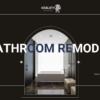Regular roofing surveys are essential for maintaining the structural integrity and longevity of a building’s roof. While there isn’t a one-size-fits-all answer to how often roofing surveys should be conducted, several factors influence the frequency of inspections. Here are some considerations to help determine the appropriate schedule for roofing surveys:
1. Age of the Roof
Newer Roofs: Newly installed roofs typically require less frequent surveys, as they are less prone to damage and deterioration. However, it’s still advisable to conduct an initial inspection within the first year of installation to identify any installation issues or manufacturing defects.
Older Roofs: As roofs age, they become more susceptible to wear and tear from exposure to the elements. Older roofs, especially those nearing the end of their expected lifespan, should undergo more frequent surveys to assess their condition and identify signs of deterioration.
2. Roofing Material
Type of Material: Different roofing materials have varying lifespans and maintenance requirements. For example, asphalt shingle roofs may need inspections every 3-5 years, while metal or tile roofs may require less frequent surveys.
Manufacturer Recommendations: Follow the manufacturer’s guidelines for maintenance and inspection intervals specific to the roofing material used. Some manufacturers recommend regular inspections every 1-3 years to maintain warranty coverage.
3. Environmental Factors
Climate: Roofing surveys should be conducted more frequently in areas prone to severe weather conditions, such as high winds, heavy rainfall, hail, or extreme temperatures. These factors can accelerate roof deterioration and necessitate more frequent inspections to address damage promptly.
Vegetation and Debris: If the building is surrounded by trees or foliage, regular surveys may be needed to clear debris from the roof and prevent potential damage or drainage issues.
4. Previous Damage or Repairs
History of Damage: Buildings that have experienced previous roof damage or undergone repairs may require more frequent surveys to monitor the condition of the roof and ensure that repairs are holding up over time.
Type of Damage: Certain types of damage, such as leaks, loose shingles, or deteriorated flashing, may necessitate immediate attention and more frequent surveys to prevent further issues.
5. Usage and Foot Traffic
Commercial vs. Residential: Commercial buildings with flat or low-slope roofs may require more frequent surveys due to the increased risk of water pooling and drainage problems. Residential buildings with steep-slope roofs may have less frequent survey intervals but should still undergo periodic inspections to detect potential issues.
Roof Access: If the roof is accessible and regularly used for maintenance or recreational purposes, more frequent surveys may be necessary to assess wear and tear from foot traffic and ensure safety.
Conclusion
There is no universal timeframe for conducting roofing surveys, as the frequency depends on various factors unique to each building and its environment. However, as a general guideline, it’s recommended to schedule inspections at least once a year, preferably in the spring or fall when weather conditions are mild. Additionally, after severe weather events or if any signs of damage are observed, prompt surveys should be conducted to assess the extent of the damage and initiate repairs as needed. Regular roofing surveys are an essential part of proactive maintenance that can help extend the lifespan of the roof, prevent costly repairs, and ensure the safety and comfort of building occupants.












